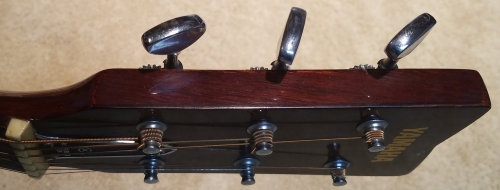

Normally the block is placed at the first fret. If the screw is stripped in the wood, get something under the head of the screw to provide upward pressure while unscrewing. This can sometimes be difficult because the 2 front screw can be directly under a string.

If you haven’t already, remove the screws holding the truss rod nut cover to the headstock. Here’s a picture of the block being used on my FG-300. A 18″ or 24” straight edge to check the neck projection to the nut. A steel 6” scale graduated in 32nds to check the back bow.Ħ. (A squeeze clamp won’t have enough pressure.)Ĥ. The length is critical to be able to fit it in the pocket in the headstock. I’ve made a drawing of the wrench and did a search but wasn’t able to find an exact match. When the clamp is released the neck should stay just slightly back bowed and will require a slight release of the truss rod nut to get a little neck relief.ġ. The block has slots in the face to allow it to be used without removing the strings. The guitar must be tuned to pitch before starting. If the nut doesn’t seem to adjust the neck relief, I loosen the truss rod nut, and use a custom back bowing block (made from a 2×4), and a screw clamp (with a cork pad to protect the back of the neck) to back bow the neck 3/16”, then tighten the truss rod nut, and remove the clamp & block. If it gets tight with no movement in the neck, STOP before burying the nut into the neck or breaking the truss rod.

After reinstalling the nut and snugging it up, make 1/8” turn adjustments and check the neck relief. I recommend removing it first and lubricating the threads with a light grease or oil. The necks on vintage Yamaha’s are old and hard, many times you can’t just crank on the truss rod nut to adjust the neck relief, sometimes the wood won’t bend without a fight, and you will bury the nut into the neck (and run out of adjustment) or possibly strip or break the truss rod.įirst I try to adjust the neck relief with the truss rod nut. This applies to Yamaha FG’s (made 1966-1981) with the adjustment in the headstock, although you can apply the same technique if the truss rod nut is inside the body.


 0 kommentar(er)
0 kommentar(er)
